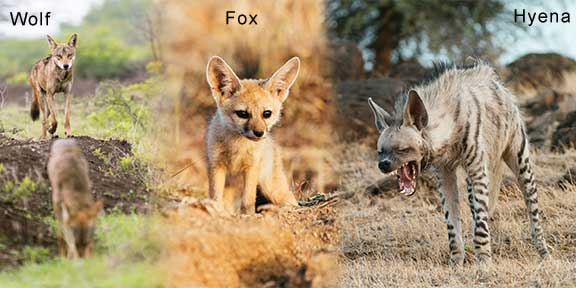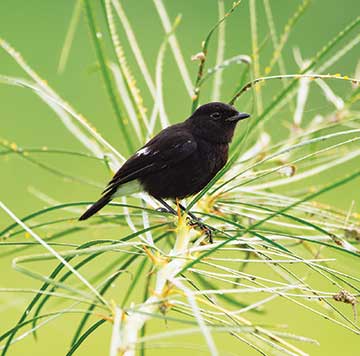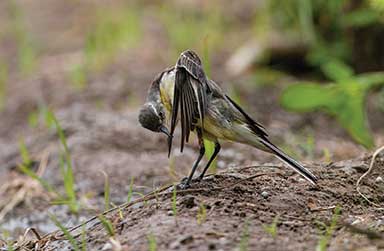Girish Menon
All our geography textbooks in school in the 90s, insisted that the monsoon season in India occurs between June and September. Year after year, this fact turned out to be accurate. The monsoons arrived in Mumbai and nearby coastal areas around the 9th of June, a few days before schools reopened after our summer holidays.
Things changed towards the end of the first decade of the 21st century. Everybody’s prayers for rain and respite from the scorching summer heat fell on deaf ears. Summers in Mumbai now extend even until the first week of July. But even a few minutes of rainfall can flood Mumbai and disrupt traffic. On the other hand, Pune, a city that’s about 150 kilometres southeast of Mumbai, is in the rain shadow region. It receives less rain compared to Mumbai and other coastal areas.

Bhigwan is a small town about a 100 kilometres from Pune. There are lots of arid areas in this region where antelopes, Indian foxes, striped hyenas, and Indian grey wolves live and breed. But farmers are able to grow sugarcane, millets, and fruits such as pomegranates and bananas, thanks to the waters of the Ujjaini dam. In fact, they call this region the sugarcane belt of Maharashtra. Bhigwan is also a major fish market. It is famous for its tilapia fish, which multiply in the reservoir of the dam.
Adult hyenas and wolves love taking refuge in sugarcane fields, where they spend most of their day. But with each passing year, they lose their wild habitat to agriculture. Over the next decade, these foxes, hyenas, and wolves may have no place to dig dens to raise their young. And as a result, they will perish from this region. Being scavengers, they keep this ecosystem free of bodies of dead cattle. Their services prevent the outbreak of infectious diseases. Only time will tell us the exact consequences of their disappearance.
We see over 300 species of birds here. Pond herons, black-winged stilts, and yellow wagtails are endemic. Other birds such as flamingos, bar-headed geese, northern shovelers, harriers, eagles and ospreys are seasonal visitors – roost here between November and May. Local people encourage avian tourism; they take us on their fishing boats to get closer to the birds. Since 2017, I have made about four trips here every year.

In December 2021, Mumbai, Pune, and even Bhigwan and its nearby regions had a few days of steady rainfall. In fact, it rained in Mumbai almost every month of the year. As a result of these unseasonal rains, the dam moderators released the excess water into the reservoir. The rains gave rise to fresh monsoon foliage, which otherwise wilts away by November. I visited Kumbhargaon two weeks after the rains and clicked some photos. The pied bushchat, a common bird in this region, perched on this fresh monsoon foliage.
At around 6 o’clock the next morning I went for a walk through the village. The temperature was around 15° Celsius and there wasn’t a single bird in sight. Birds show up once the ground gets warmer, when insects come out of their burrows looking for food and birds can prey on them.
When it got a little warmer, I was looking at ashy prinias bobbing around on sugarcane plants when I noticed a bunch of wagtails perched on the ground. One of the farmers had his water pump on. I could hear the sound of its motor even from over 200 metres away. The pump had a long black pipe with a diameter of four inches connected to it. Water spouted out this pipe and flowed through a foot-wide labyrinth of canals dug into the pomegranate field. These little canals, no more than two inches deep, were like a rampaging river relative to the size of the wagtails. The birds drank and bathed in them.

I crawled through a field of 10-foot-tall sugarcane plants beside the pomegranate field. I wanted to get a courtside seat to watch the action at eye-level. The birds seemed to love bathing in the canals, shaking themselves and calling out to one another. After their bath they stood on dry ground and shivered themselves dry. They then spent the next several minutes preening each and every one of their feathers.
I enjoyed watching these wagtails so much that I went back the next day to click more photos. But guess what – the farmer had harvested the pomegranates and cut off the plants. The field lay there empty, not a single bird in sight. I stood there thinking to myself how easy it is for human beings to create and destroy bird and wildlife habitats.
The author helps people find joy through photography. He used to teach photography at SNDT Women’s University in Mumbai and has taught photography workshops at various schools, colleges, and corporate establishments. He gives photography lessons via live video calls to anyone that is keen to learn photography. Visit www.girishmenon.com for more details. He can be reached at girishmenonphotography@gmail.com.
